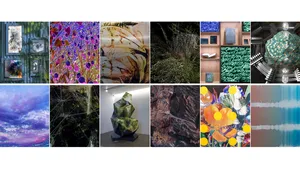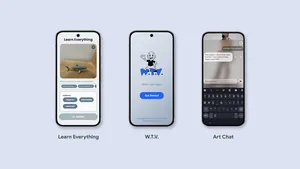See art from the vaults of La Isla del Encanto
Editor’s note: In this guest post, we’ll hear from Carlos R. Ruiz Cortés, Executive Director of the Instituto de Cultura Puertorriqueña (ICP).
Art can capture both the idiosyncrasies and the national identity of a people. With more than 40,000 artifacts in our National Collection, the Instituto de Cultura Puertorriqueña's mission is to share Puerto Rican culture in its diversity and complexity. Since the closing of our national gallery in 2013, these works have been shared through limited museum loans, institutional exhibitions, educational tours and academic research--but they have lacked a permanent space.
Today, in partnership with Google Arts & Culture and Lin-Manuel Miranda and Luis Miranda Jr., we’re launching the first phase of a project which will bring these works out from behind closed doors. You can now zoom in on the intimate dinner scene of “La Mixta,” and see how the brushwork of Cervoni Brenes Francisco brings to life the workers’ day-to-day, or travel through the 18th-century streets depicted by José Campeche y Jordán in his painting “El Gobernador Don Miguel Antonio de Ustariz.”
We’ve also used Google Arts & Culture’s Art Camera to digitize iconic works from our archives in hyper-detailed resolution. This will allow everyone to explore the images down to brush stroke level and will help us to preserve the works in their current form for future generations.
It has also given our team new insight into the stories these works tell. In “El Gobernador Don Miguel Antonio de Ustariz,” we were able to see José Campeche y Jordán’s miniature style in great detail, illuminating an interaction in the background of women appealing to men of a higher class. For the first time, we found the signature of Consuelo Peralta de Riego Pica on her painting “Visión de San Felipe Benicio,” granting us a better understanding of this pioneering female artist.
The Art Camera at work, digitizing “El Gobernador Don Miguel Antonio de Ustariz.”

Hurricane Maria reminded us of the urgency of preservation. It devastated our island and awakened the need to preserve our culture while we restored our home. For us, the Art Camera is more than a piece of technology—it's a symbol of universal access. The technology will make Puerto Rico's art accessible to millions of people who otherwise wouldn't be able to see it. Looking through the lens of Art Camera as it captures Ramón Frade’s “El Pan Nuestro,” I think of how everybody will now have a new lens through which to see Puerto Rico.
Today, the collection is available through Google Arts & Culture at g.co/puertoricanculture for everyone across the world. There, you can explore the Pre-Raphaelite works of the Museo de Arte de Ponce, the range of modern artists at the Museo de Arte Contemporáneo de Puerto Rico, and the plurality of art displayed at the Museo de Arte de Puerto Rico.
One of Rafael Tufiño Figuero’s seminal works, “Goyita” (1953), features the artist’s mother as a model, breaking with the conventions of portraiture to create a dignified depiction of a working class woman.
Lord Fredric Leighton’s belief in Aestheticism, or “art for art’s sake,” is clearly reflected in one of his finest works, “Flaming June” (1895). Though once considered to be an outdated artwork, it has since come to be seen as a superb example of the period’s art.
José Campeche y Jordán was the most important painter of portraits and religious imagery in late-eighteenth and early-nineteenth century Puerto Rico.
Experience the vibrant and dynamic contemporary art scene of Puerto Rico through works like “Spirit of the Cut” (1996) by Daniel-Lind Ramos.
Olga Albizu (1924 – 2005) developed a singular body of abstract works, beginning in the 1950s. In the sixties, her work became known internationally when it graced many albums by the finest interpreters of the Bossa Nova.
I hope you will visit and see firsthand how our cultural heritage inspires people today, creativity sparking on every corner of San Juan and beyond. It is with joy that we offer this cultural patrimony back to the people of Puerto Rico and celebrate our culture with the world.






